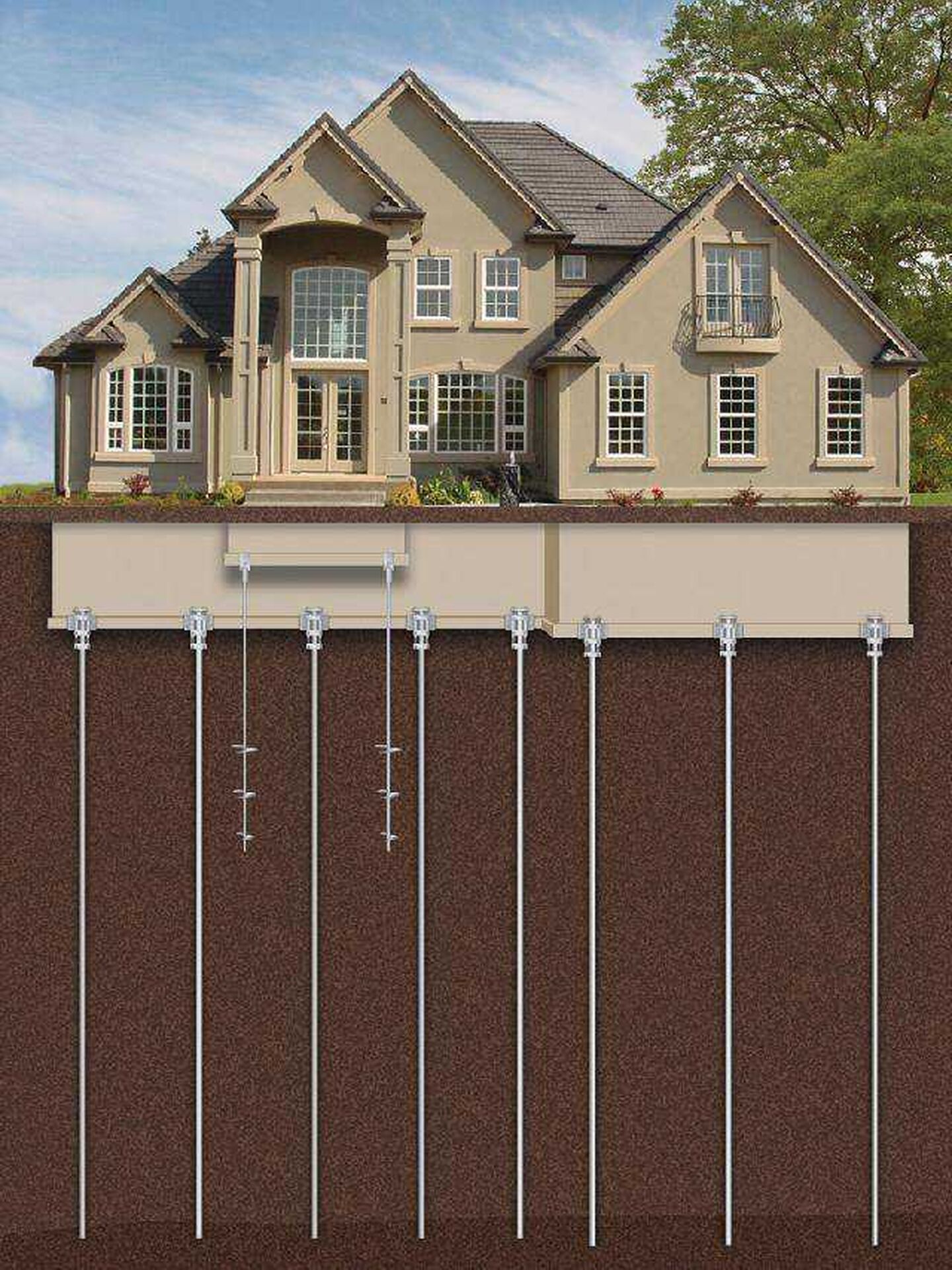How to Repair a Sinking Foundation
by siteadmin

It’s important to understand the warning signs of a sinking foundation so that you can get it repaired before the problem gets worse. This will help you determine how severe the damage is and which repair method is best for your home.
Look for horizontal cracks in your foundation walls that seem deeper than the surface. Also, notice if doors and windows are starting to stick or open and close with difficulty.
Water Damage
When water damage happens to a home, it is often the foundation that takes the hit. Whether it’s from flooding or rain, the moisture can cause soil to shift. When soil moves, it can affect the weight of a foundation and cause it to sink. The best way to prevent this is by having a foundation specialist come out and inspect your home. They will be able to diagnose the problem and tell you what can be done about it.
If your home has already begun to sink, it is important to take action right away. The longer that you wait, the worse the problems will become. There are many different methods that can be used to fix a sinking foundation, and the best way to know what will work for your situation is to have a structural engineer examine your home. A structural engineer will be able to give you an unbiased view of what is going on with your foundation and recommend what repairs are necessary.
One method of repairing a foundation that is beginning to sink is called piering. This involves placing vertical piers into the ground underneath the sunken part of the foundation. These piers then have hydraulic jacks attached to them that can lift and level the sunken section of the foundation. In the long term, this method can also be used to lift the entire house, if it is needed.
Another method that can be used to repair a sinking foundation is called mud jacking. This is a process that involves injecting a special slurry under the foundation that will raise it back to its original position. This method is relatively inexpensive, and it is effective in the short term.
A final reason that a foundation might sink is due to poor construction. This can be caused by using low-quality building materials, not compacting the soil properly, or having a drainage system that is not working correctly.
A sinking foundation is a very serious problem that can lead to severe damage to your home. It is important to get a professional to look at it as soon as you notice any signs that it is occurring. Having it repaired early on will save you a lot of money in the long run. Click Here to have a local professional inspect your home's foundation today!
Severe Weather
When the foundation of a home sinks, it is more than just an inconvenience for homeowners. This is a problem that requires professional attention as soon as possible to avoid further damage and potentially costly repairs in the future. Fortunately, there are several things that can be done to prevent this from happening, including retaining walls and helical piers.
It is important to note that it is normal for homes to settle a bit as they are built, but this should only be a minor amount. The weight of a house causes the soil underneath to compress, and the weather can affect this as well. This is why it is so important to have a professional inspect your home for problems like this. If a sinking foundation is left unchecked, it could result in huge cracks in interior walls and floors and even the collapse of the entire structure.
Some common warning signs of a foundation sinking include noticing that one side of your home is lower than the other or having a basement with a floor that is below the level of the rest of the room. Another way to catch this is by ensuring that you have a yearly professional inspection of the exterior of your home and the foundation. This is the best way to spot small issues that you may not be able to notice on your own.
A professional will be able to determine how severe the problem is and what method of repair will be necessary. Generally, this will involve using helical or push piers to lift the foundation up and restore it to its original position. These are steel posts that are driven into the ground around the foundation and secured to the foundation with a bracket. These can be installed by a professional in a day or less and will not require any digging or excavation work.
It is also a good idea to install drainage in the area surrounding your foundation, as this will help keep water away from the foundation. This will prevent the soil from becoming saturated and compressing, which can lead to foundation settlement and sinking.
Drought
Many foundation issues can be fixed fairly quickly, but a sinking foundation requires immediate attention. It is typically caused by water damage, and it is a sign that the soil underneath is not stable. If left unchecked, a sinking foundation can cause serious structural damage to the house. A professional engineer should be consulted as soon as possible to diagnose the problem and decide on the best course of action.
Drought can have a major impact on a foundation, and it can be difficult to tell when the issue first starts. When the soil is overly moist, it swells and creates hydrostatic pressure that can crack the foundation. Once the soil dries up, it shrinks and causes the foundation to sink. Luckily, this is usually only a temporary problem. Once rain falls, the ground will reswell and relieve the pressure on the foundation.
A homeowner should look for signs of a sinking foundation, especially in the areas around doors and windows. The cracks in these areas will be most pronounced, and they will often appear as horizontal or stair-step patterns. A house with brick walls should be particularly vigilant, as the mortar is a weak point that will crack when the foundation shifts.
Other signs of a sinking foundation include uneven floors, jammed doors and windows, and structural damage to the house itself. If a foundation is sinking on one side, it will often be necessary to install push or resistance piers to lift the foundation. These piers will be drilled into the soil to secure them on bedrock. A sinking foundation on the other hand may be corrected by using mud jacking, which involves injecting a stabilizing mixture of concrete and water underneath the foundation to raise it back up to its original position.
There are a few different options for fixing a sinking foundation, and each one should be carefully considered before choosing a repair method. It is important to have a structural engineer examine the home as soon as possible, as they will be able to give an unbiased opinion on the repair method that would be most effective. Visit www.sugarlandfoundationrepair.com today to schedule your free estimate!
Poor Drainage
Foundation sinking is not only caused by weather and soil conditions, but poor drainage can be a big culprit. When the ground around a home is saturated with water, it causes the soil to expand and compress. This shifts the load-bearing stratum and puts unnecessary strain on a home’s foundation. Over time, this can cause cracks to form in the foundation and the walls of a home. The best way to fix this is by installing a drainage system and redirecting water away from the foundation.
When the foundation of a home is sinking on one side, it can be a sign of soil erosion and poor construction. When a house is constructed, the soil must be compacted to ensure that it will support the weight of a home. If this is not done properly, it can lead to the foundation sinking and causing damage to the entire structure of the home.
If your foundation is sinking on one side, you may need to carry out underpinning work to lift the foundation back to its original position. This can be done by using a variety of methods, such as mud jacking or polyjacking. A professional can help you determine the best option for your home.
Another way to repair a sinking foundation is by installing push piers. This is a process in which the team will dig deep into the ground to find secure bedrock and then prop the foundation on these supports. The crew can also install drainage systems to make sure that the soil is properly drained.
If you have a sinking foundation, it’s important to act quickly. Contacting a professional for help is the best way to get the problem under control and avoid costly repairs in the future. Talk to a foundation repair expert from Sugar Land Foundation Repair Solutions today for more information about the different options available for lifting your sinking foundation. They can provide you with a personalized plan to get your foundation back up and running.
It’s important to understand the warning signs of a sinking foundation so that you can get it repaired before the problem gets worse. This will help you determine how severe the damage is and which repair method is best for your home. Look for horizontal cracks in your foundation walls that seem deeper than…
Recent Posts
- Apex Plano Foundation Repair: Leading the Way in Foundation Inspections and Repairs in Plano, TX
- Pro Movers Spring TX Sets New Standard in Professional Moving Services
- Warrior Plumbing, LLC: We’ll Attack Your Plumbing Problems with Precision and Excellence
- Warrior Plumbing, LLC: We’ll Attack Your Plumbing Problems with Precision and Excellence
- J. Renee Photo Redefines Professional Headshot Photography in Houston, TX
